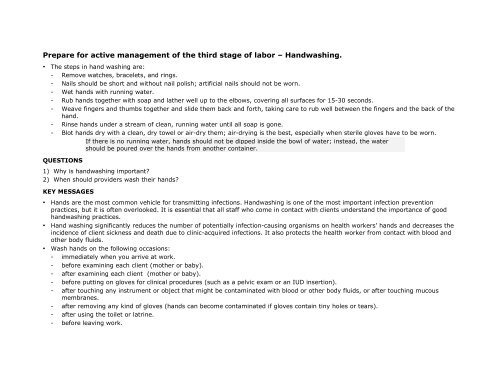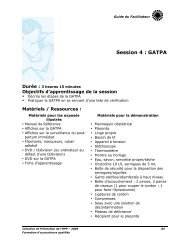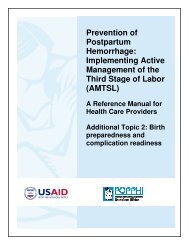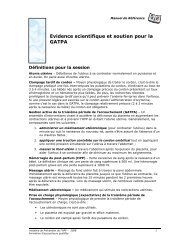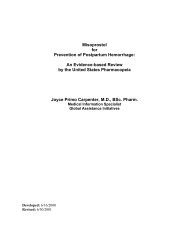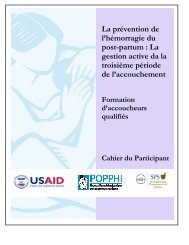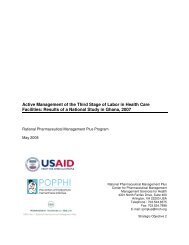English version PDF - POPPHI
English version PDF - POPPHI
English version PDF - POPPHI
Create successful ePaper yourself
Turn your PDF publications into a flip-book with our unique Google optimized e-Paper software.
Prepare for active management of the third stage of labor – Handwashing.• The steps in hand washing are:- Remove watches, bracelets, and rings.- Nails should be short and without nail polish; artificial nails should not be worn.- Wet hands with running water.- Rub hands together with soap and lather well up to the elbows, covering all surfaces for 15-30 seconds.- Weave fingers and thumbs together and slide them back and forth, taking care to rub well between the fingers and the back of thehand.- Rinse hands under a stream of clean, running water until all soap is gone.- Blot hands dry with a clean, dry towel or air-dry them; air-drying is the best, especially when sterile gloves have to be worn.If there is no running water, hands should not be dipped inside the bowl of water; instead, the watershould be poured over the hands from another container.QUESTIONS1) Why is handwashing important?2) When should providers wash their hands?KEY MESSAGES• Hands are the most common vehicle for transmitting infections. Handwashing is one of the most important infection preventionpractices, but it is often overlooked. It is essential that all staff who come in contact with clients understand the importance of goodhandwashing practices.• Hand washing significantly reduces the number of potentially infection-causing organisms on health workers’ hands and decreases theincidence of client sickness and death due to clinic-acquired infections. It also protects the health worker from contact with blood andother body fluids.• Wash hands on the following occasions:- immediately when you arrive at work.- before examining each client (mother or baby).- after examining each client (mother or baby).- before putting on gloves for clinical procedures (such as a pelvic exam or an IUD insertion).- after touching any instrument or object that might be contaminated with blood or other body fluids, or after touching mucousmembranes.- after removing any kind of gloves (hands can become contaminated if gloves contain tiny holes or tears).- after using the toilet or latrine.- before leaving work.


